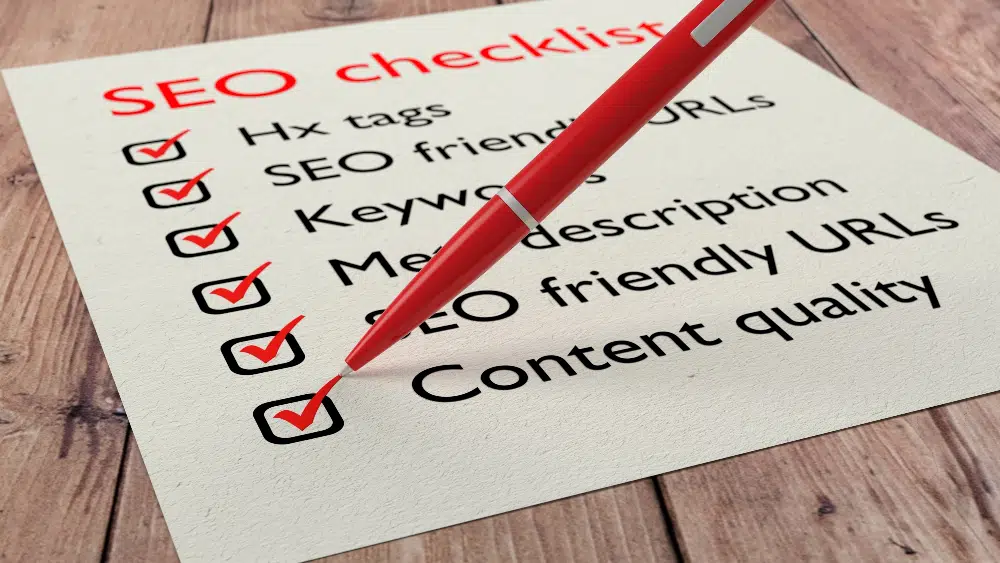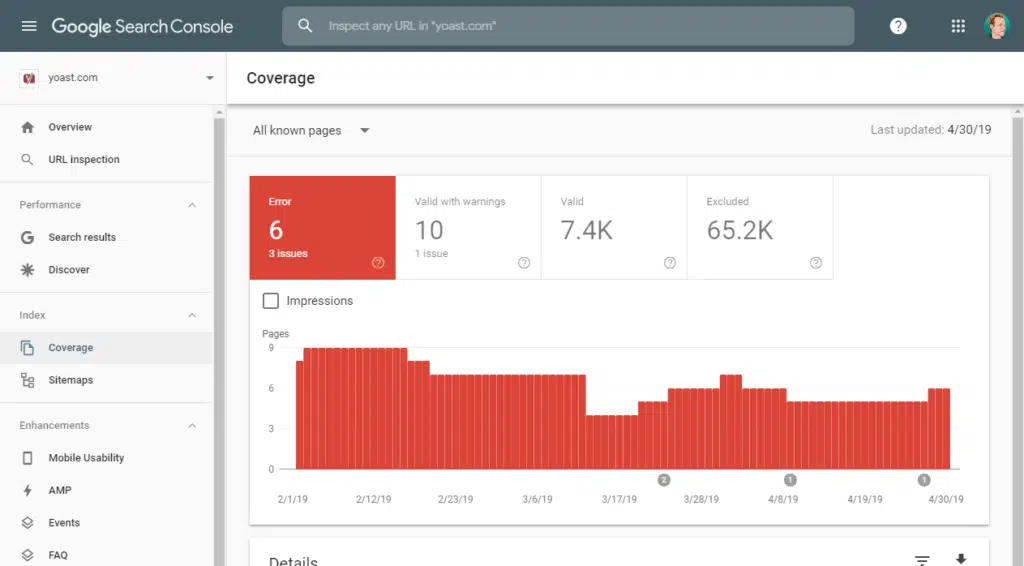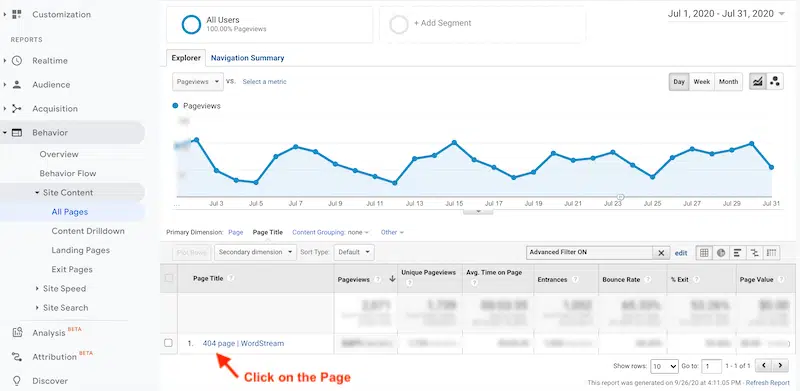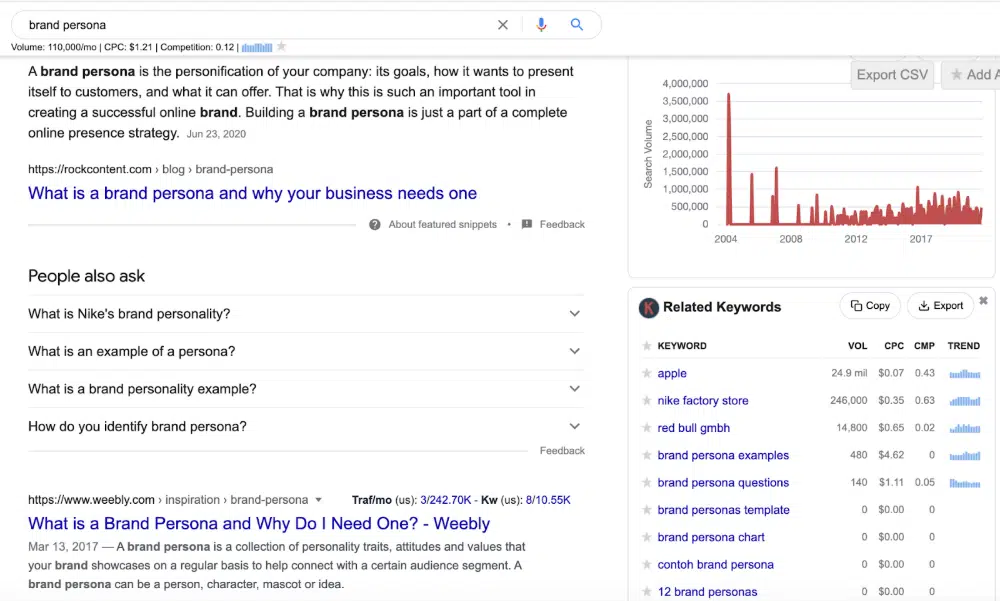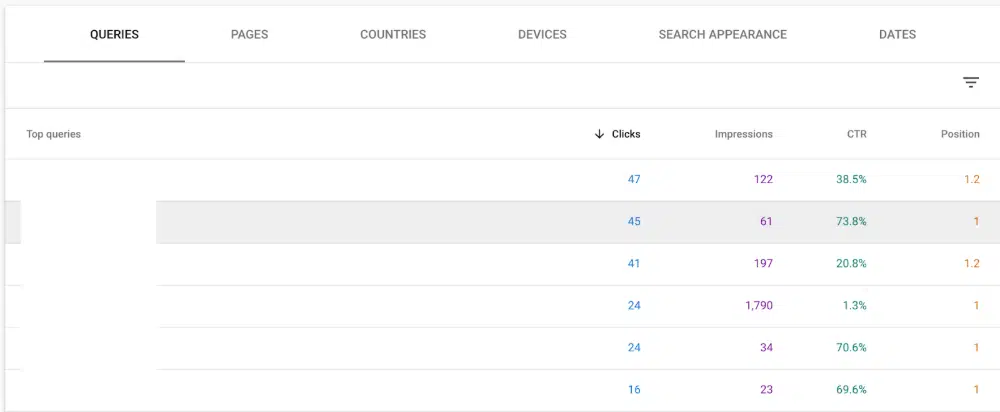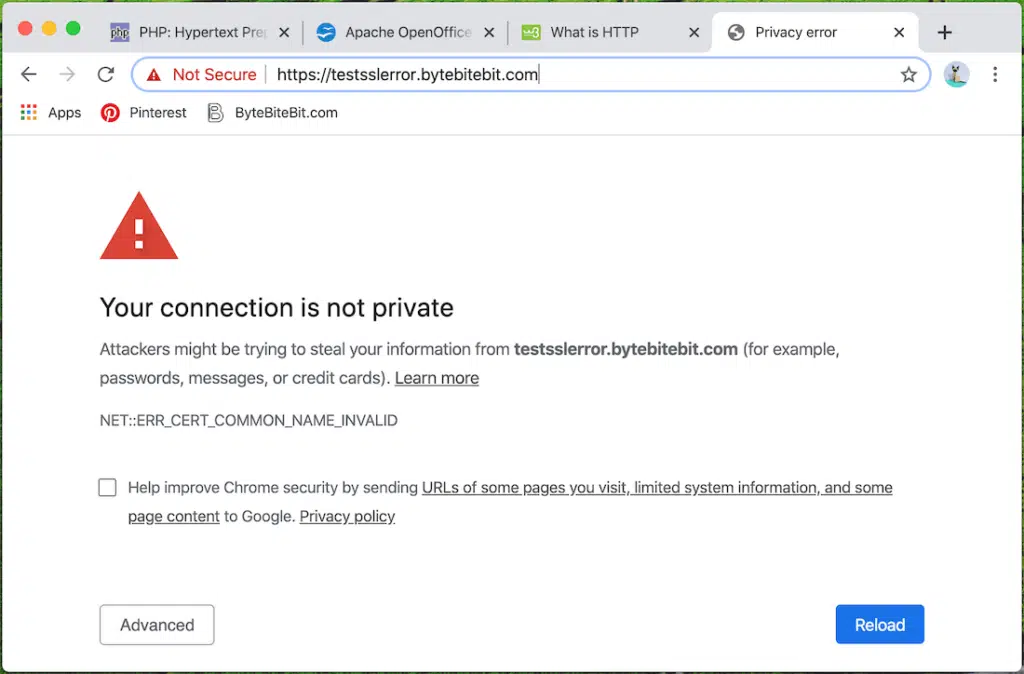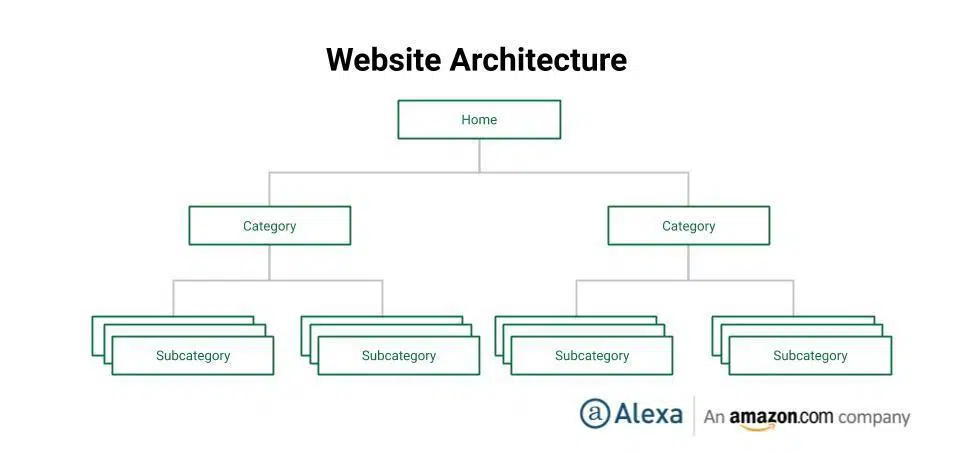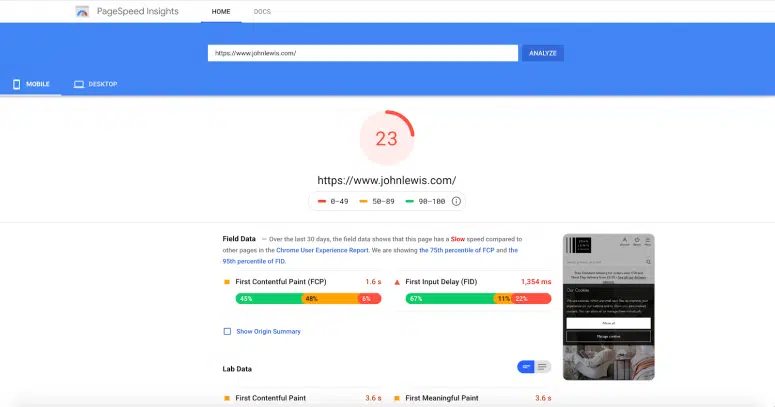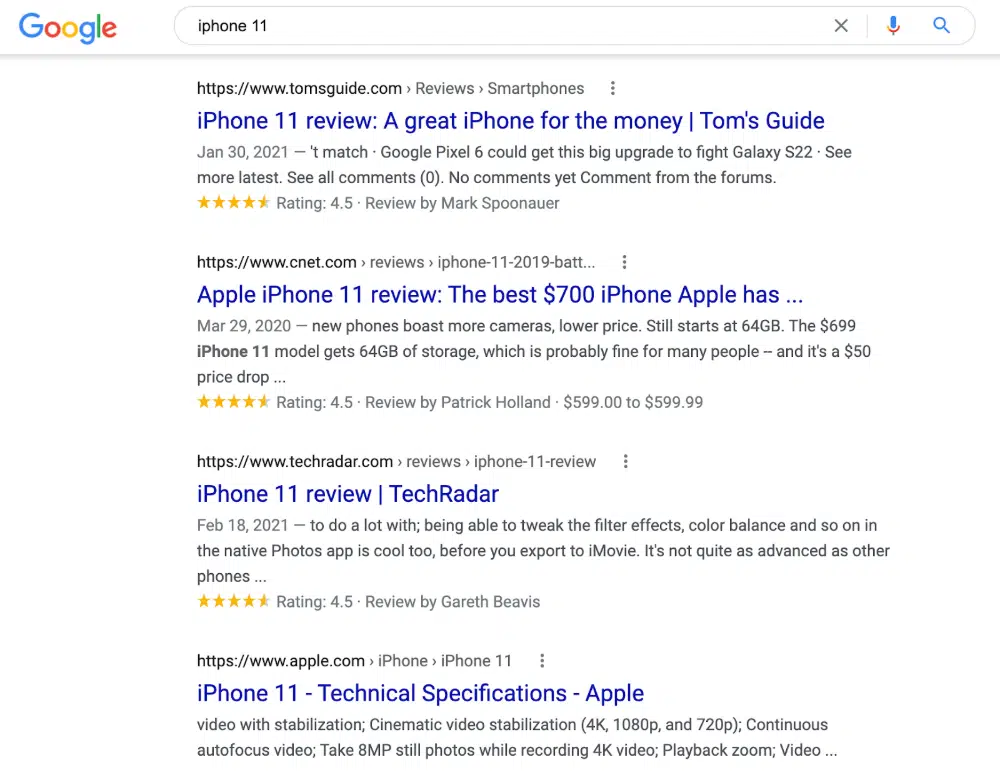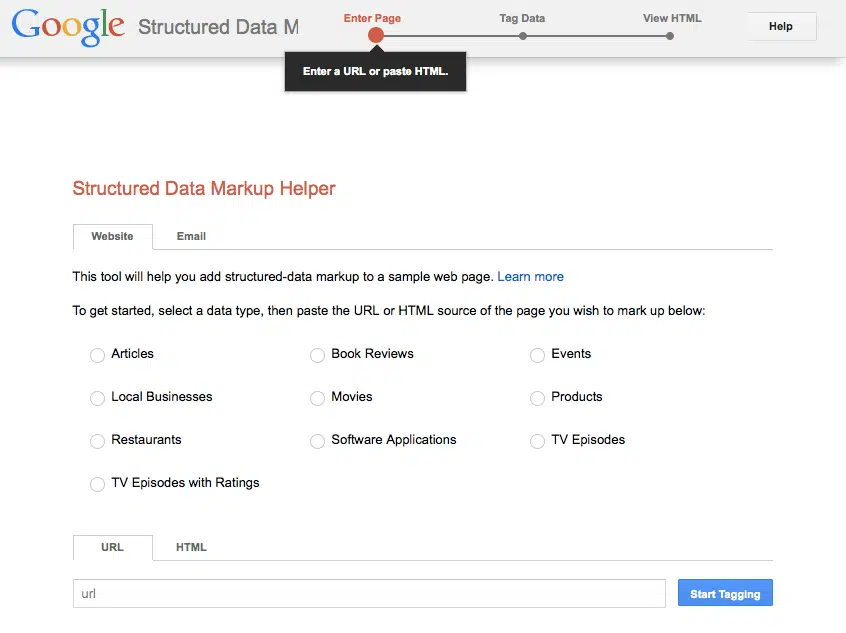This article has been contributed by Jayson David.
In today’s digital age, business websites are a key sales channel. So, it makes sense that having a robust SEO strategy is critical to driving organic traffic, increasing conversions, and maximizing revenue.

If your website doesn’t rank on the first page of organic searches, your business will get lost in the crowd!
But how can you optimize your site to maximize your chances of getting to the top of the search engine results pages (SERPs)?
Luckily for you, this is the ultimate technical SEO checklist to help you boost your search rankings. We have kept it simple so that SEO beginners can complete these activities.
We have also included a host of free SEO software and tools that you can use to get the job done.
12 Step Advanced Technical SEO Checklist
1. Look for Crawl Errors
Search engines crawl your website to index each of your webpages and their content. However, crawl errors prevent Google from indexing, and therefore, ranking your website.
It is important to fix these errors. Google Search Console (GSC) is one of the most commonly used tools to identify and fix crawl errors. It’s free and very easy to use at a basic level.
Click on Coverage on the GSC dashboard to identify any crawl errors on your website.
We highly recommend periodically checking your website for crawl errors.
Image source: yoast.com
Google divides crawl errors into two types – site errors and URL errors. Site errors prevent Google from crawling and indexing your website, while URL errors indicate issues on specific pages on your website.
GSC provides a straightforward solution to fixing both types of crawl errors. Sometimes, Google will highlight an issue of slow page load speed. These usually are temporary issues due to heavy traffic on the server.
2. Fix Broken Links (Internal and Outbound)
Broken internal and outbound links lead to a poor user experience for both website visitors and search engines. Users don’t like it when they click a link and arrive on a 404 error page. Search engines down-rank websites with excessive broken links.
Google Analytics is a great free tool to check broken links on your website. Click on the Site Audit Report tab on the dashboard and enter “404” in the Page Title tag.
In addition to fixing the 404 errors, you can also check for the following:
- 301/302 links
- Take a deeper look at the internal linking framework of your website
- Orphaned pages (which are not linked at all)
To repair broken internal and outbound links, update the target URL or delete it if the corresponding page has been deleted from your website.
Fixing your website’s internal linking structure is an easy route to higher search rankings. Implement the most effective internal linking strategy and start identifying web pages required to be linked to or from other pages on your website.
In addition, building backlinks (external links that point to your website) helps in improving your domain authority and search rankings.
3. Remove Duplicate Content
Duplicate content, thin content and plagiarized copy on your website can limit your search rankings. Identify and eliminate all instances of duplicate content and pages with thin content.
Apply the following techniques to fix duplicate content, depending on the nature of the problem:
- Delete duplicate content wherever you can
- Add canonical or no-index tags on necessary duplicate web pages
- Set the preferred domain in Google Search Console
- Set up Google Search Console parameters
Over time, content can become dated and become less relevant. That’s natural! To improve your technical SEO and rank high on SERPs, you need to update your old content.
You should do a periodic review of all of the content on your site. It’s a good idea to compare your search rankings over time. For example, you can compare your search results from one year ago with the search results from today.
A comparative analysis will help you identify content that has dropped in the search rankings. Make a list of the content that has dropped position.
You should then review the content. Consider what made the content drop in the search results.
Once you have your list, decide which content to update first.
Improve your underperforming content by adding valuable information. You can update your articles by ensuring the information is up to date and updating your website design to make it more user-friendly or something else entirely.
The goal of the update is to ensure that content on your site is valuable for visitors. The better the content, the higher it is likely to rank in the search results. Outdated website content generally does not offer a great user experience.
4. Reformat URLs and Title Tags
Make sure that the formatting of the URLs across all your pages is consistent in structure. For instance, search engines consider the following domains as separate websites rather than the same website:
If you’ve added an SSL certificate to your site, make sure to implement the relevant redirects. There are plenty of plugins available that will automatically redirect all http URLs to https, for example. That will ensure that only the correct content is indexed on Google.
Your meta headline and meta description will impact your SEO rankings. They are usually the first thing any search engine would look at to help a web page rank on SERPs.
You want to make sure that your meta headline and meta description are interesting. You want people to look at your content in the search results and decide that they should click on you over an alternative listing.
Your meta headline describes what your content page is about. Each page on your website must have a unique title tag. Make sure there are no duplicate and truncated title tags. If the title tags are very long, they will get cut off on the SERPs.
You will see a part of the missing title followed by three dots.
Take a look at the image below to see how optimized title tags appear on SERPs:
Ensure that title tags are not left blank. You can identify these issues when you run your Site Audit report. Hence, you can immediately identify and fix those issues by improving and updating your page’s title tags.
You can use GSC to identify the primary keyword that you should include in your meta headline. Simply select the page in GSC and then click on queries. You will see which keywords get the most impressions. You can then include this term or terms in your meta headline.
You can see in the screenshot above that the Queries tab has been selected. That tab provides you an overview of all of the terms that the page is ranking for. The columns on the right of the screen are clicks, impressions, Click Through Rate, and SERP position.
5. Optimize Meta-Descriptions
The meta description describes the content on the webpage. Your meta description tag is displayed below the website’s meta headline in the SERPs.
Meta descriptions help entice people to click on your link.
Google will selectively decide whether to include your custom meta description in the search results. Sometimes it will include the meta description you suggested, and occasionally it will create a meta description by pulling a segment of text from your article.
A good strategy while writing the meta description is to include keywords relevant to the content on the page. Including relevant keywords will help people who see the search results understand what content you are providing. Again, you want to optimize your text for conversions, so make it interesting.
For instance, if you built an online course focused on helping beginners understand SEO, you may use something like what the folks at Moz did.
The idea is to create a meta description that encourages them to click on the SERP result to learn more.
You can use the GSC performance report, I showed you how earlier, to identify keywords that create impressions on organic searches. Optimizing your meta descriptions you will witness a significant increase in CTRs and improvement in search engine rankings.
6. Use HTTPS Protocol
HTTPS protocol is a search engine ranking factor. If you haven’t already, you should shift to HTTPS. The SSL layer protects the data on your website as well as your customers’ sensitive financial data. HTTPS websites encrypt data to prevent hacking.
HTTPS websites are identified by a padlock symbol in the URL bar.
Web browsers like Chrome classify non HTTPS websites as unsafe and you will get a message to this effect if you try to navigate to these sites. HTTPS sites are identified by a lock symbol in the URL bar of the website.
Sites that are not secure may display a message like the one below.
Image source: bytebitebit.com
You can pretty much guarantee if someone sees that message they will not visit your website. That’s part of the reason you want HTTPS enabled on your site.
Once you migrate your website to HTTPS, ensure that all pages on your website are HTTPS configured. That means setting up redirects, or installing a suitable plugin, something that I touched on earlier.
7. Optimize Your Website Structure
To perform well in technical SEO, you should optimize your website framework. Every page on your website should ideally be within three clicks from the homepage.
A flat website architecture will enable you to reach any page within three clicks.
Image source: blog.alexa.com
A flat architecture gives your users a better UX and helps your search rankings as this architecture is easy to crawl. The taller your website’s structure, the lower it will rank on organic searches. Hence, this will negatively impact the traffic to your website.
If your website is a Single Page Application, a format that is becoming increasingly popular with small businesses and agencies, you obviously won’t have a traditional URL structure with categories and subcategories. Single Page Application SEO involves some specific considerations and challenges you should be aware of.
You should also consider the URL structure. An SEO-friendly URL helps people instantly understand what you are talking about. For example, which URL is easier to remember:
- com/blog/really-long-article-about-kpi
- com/blog/kpi
I think we can agree which URL you’d remember.
All your URLs should be descriptive and straightforward. Never use a query string that is not descriptive. A non-descriptive string like domain.com/category.PvP?id=32, should be replaced by something simpler and clearer like domain.com/red-shoes/.
Add hyphens to your URLs to separate one word from another. Don’t add underscores. Keep your URLs as short as possible, as shorter URLs are likely to rank higher. As per Google Search Central, a website’s URL framework must be as simple as possible.
8. Improve Site Speed
Every user loves to access a high-speed website. A slow website delivers a poor user experience. The latest Google Page Experience Update has confirmed that site load speed will now be an important ranking metric.
You can use several tools to check the loading speed of your website. Tools like GT Matrix and Google Page Speed Insights are simple, and free-to-use tools. The sites give you useful tips on how to improve your page load speed.
You should try to improve your page speed by following the suggestions provided by these sites. Implementing page speed fixes requires technical knowledge. You might need to hire a developer to implement the fixes.
You should also consider changing your web host if your site takes a long time to load. Research hosting reviews and comparisons to find the best hosting service for your site.
Some smart solutions can help improve your page load speed. For example, tools like NitroPack can automatically optimize your website for page speed.
Tools like this are great because they remove the need for technical understanding of how to implement fixes. Instead, you just pay $20 or so a month and get a speedy site.
No one likes to wait for a website that is slow to load. Even if you perform a crawl via the site audit, you can identify slow-loading web pages and flag them for corrective action.
9. Ensure the Site is Mobile-Friendly
According to the Google Page Experience Update, mobile-friendliness is one of the top search engine ranking factors. With over 50% of all internet traffic originating from mobile devices, Google shifted to mobile-first indexing for all websites from mid-2019.
Offering a mobile-friendly experience ensures you provide a better user experience. It will also help your search rankings.
You can use Google’s mobile-friendly testing tool to check your website’s mobile-friendliness.
Check your website for both desktop and mobile load speed. Ideally, the numbers should be similar. If the mobile number is much lower than for the desktop, you need to take corrective action.
10. Optimize Your XML Sitemap
An XML sitemap informs search engines regarding your website framework and elements to index in the SERP.
Image source: yoast.com
Optimize your XML sitemap to cover the following points:
- Update the XML sitemap for new content like blogs, FAQs, or product descriptions.
- Include all 200-status URLs.
Exclude the following elements from your XML sitemap:
- Duplicate content
- URLs with 4xx/5xd status codes
- URLs that redirect to 301 or contain no-index or canonical tags.
- URLs with parameters
To find any index errors with your XML sitemap, check the Index Coverage report in Google Search Console.
11. Add Structured Data
Structured data on your website provides information regarding a web page and its content. Hence, providing context to Google regarding the content on the page. This helps in improving your SERP ranking.
Schema markup is one of the most commonly used forms of structured data. There are several types of schema markups for structuring data.
Use online schema markup like Google’s Structured Data Testing Tool to build schema markup for your website. You can organize your markup based on variables like articles, reviews, events, and more.
Image source: moz.com
Structured data markup is a valuable ranking signal. If you are not using structured data markup as part of your SEO optimization strategy, now is the time to get started.
12. Check Redirects
301 redirects indicate that a redirect is permanent, while 302 reflects that the redirect is temporary. It is pretty common to see 302 redirects being used in place of 301s. Though Google has declared that a 302 redirect is acceptable for PageRank, the truth is it needs to get updated to 301 if it is not expected to be removed in the future.
Your Site Audit report will list all pages with 302 redirects. Ensure that the 302 redirects do not create a redirect chain or loop.
Redirects should pass from one page to another. The site audit report highlights every issue that exists related to redirect chains and loops. You should resolve these issues by updating all redirects in a chain directed to the end target or updating/removing the element that causes the loop.
In Closing
Technical SEO optimization of your website helps improve your SERP rankings, gives your website greater visibility, and attracts higher volumes of organic traffic. Hopefully, this technical SEO checklist will help you optimize your website for search engines and boost your ranking on the SERPs.
The detailed checklist can be helpful for both the beginner and those with mid-level SEO knowledge. Optimizing your website for technical SEO elements will improve your search engine ranking. Good luck with your technical SEO efforts.
_
About the author: Jayson David is the lead writer, editor, and researcher at Hosting Foundry, which helps businesses find the best web hosts for their needs. A web hosting savant, he checks and publishes all the content on the site.
